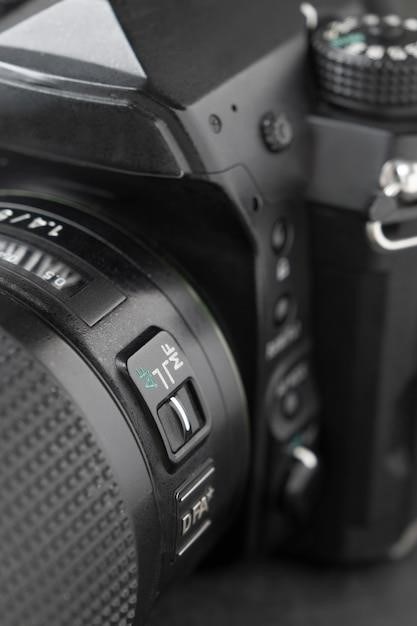GE Ice Maker Manual⁚ Key Information
Locate your GE ice maker manual online via the GE Appliances website or through appliance repair resources. Manuals often cover installation, troubleshooting, maintenance, and component understanding. Ensure proper freezer temperature (0-5°F) for optimal ice production. Always consult the manual before operating or repairing your unit.
Finding Your GE Ice Maker Manual
To locate your GE ice maker manual, begin by checking the GE Appliances website. Their support section typically houses a searchable database of manuals for various appliances, including ice makers. Enter your model number (found on a sticker usually located on the back or inside of the appliance) for precise results. If the online database doesn’t yield your specific manual, consider exploring third-party appliance repair sites. Many such websites offer extensive libraries of appliance manuals, often categorized by brand and model. Alternatively, you may find a user manual for a comparable GE model, which might offer similar operational information.
If you still can’t locate the manual, contact GE Appliances customer support directly. They can either provide a digital copy of the manual or guide you on obtaining a printed version. Remember to have your model number readily available when contacting customer service; this will significantly expedite the process. You can also explore online forums and communities dedicated to appliance repair and maintenance. Experienced users may have uploaded or linked to copies of GE ice maker manuals in their discussions.
Troubleshooting Common Issues
A common problem is insufficient ice production. Check the freezer temperature; it should be between 0°F and 5°F (-18°C and -15°C). If the temperature is too high, the ice maker may not function optimally. Also, inspect the water supply line for kinks or blockages restricting water flow to the ice maker. A clogged water filter can also significantly reduce or halt ice production. Consult your manual for filter replacement instructions. If the ice maker isn’t dispensing ice, ensure the ice bin isn’t full and that the ice maker itself is turned on. Check the feeler arm; it should be in the “ON” (down) position to allow ice production.
If the ice is producing poorly or not at all despite checking the above, consider potential internal issues. Ice maker malfunctions can sometimes indicate a problem with the ice maker’s internal components, requiring professional repair. Before resorting to professional help, carefully review your manual’s troubleshooting section. This section often provides diagrams and step-by-step instructions for diagnosing and resolving common ice maker issues. If the problem persists after following the manual’s troubleshooting steps, contacting a qualified appliance repair technician is recommended.
Understanding Ice Maker Components
Your GE ice maker comprises several key components working in concert to produce ice. The water inlet valve controls the flow of water into the ice maker. A malfunctioning valve can lead to no ice production or inconsistent ice cube size. The ice mold is the core component where water freezes to form ice cubes. Inspect this for any damage or buildup that might hinder ice production. The ice dispenser mechanism releases ice cubes into the storage bin. Issues here can result in ice jams or failure to dispense ice. The ice bin itself is the storage area for the manufactured ice. Ensure it’s clean and free of obstructions to prevent ice jams and ensure proper dispensing. A crucial component is the ice maker’s control module, a small computer that manages the entire process. Problems here can cause various malfunctions.
The water filter (if applicable) is responsible for purifying the water used to make ice. A clogged filter restricts water flow and affects ice production. Regular filter replacement is key to optimal performance. Lastly, the fill tube is the conduit delivering water from the water supply to the ice maker. Check this for any kinks or obstructions that may hinder proper water flow. Understanding these components helps in diagnosing problems. Refer to your manual for detailed diagrams and descriptions of each part and its function. This detailed knowledge aids in troubleshooting and maintaining your ice maker.
Installation and Setup
Consult your GE ice maker manual for detailed instructions. Proper installation involves connecting the water supply, securing the unit, and ensuring correct electrical connections. Allow the ice maker to complete a cycle before using. Refer to the manual for troubleshooting if problems arise during installation.
Installing a New GE Ice Maker
Installing a new GE ice maker typically involves several key steps, as detailed in your specific model’s manual. First, ensure the power is disconnected before beginning any installation work. Carefully remove the old ice maker, if applicable, noting the placement of any components. Next, position the new unit in its designated space within the refrigerator. Consult your manual for precise measurements and positioning guidelines to ensure proper fit and functionality. Connect the water supply line securely, taking care to avoid leaks. This often involves attaching the line to a water valve and ensuring a tight seal. Your manual provides detailed diagrams and instructions. Once the water line is connected, plug in the ice maker and turn on the power.
Before using the ice maker, allow it to complete a full cycle to ensure proper operation and to avoid potential issues. The manual may also include information on additional setup steps such as adjusting settings or calibrating the ice maker to your preferences. Remember that proper installation is crucial for optimal performance and to avoid damage to the appliance. If you encounter any difficulties during the installation process, refer to the troubleshooting section of your manual or contact GE customer support for assistance. Following the instructions carefully will help to ensure the successful and safe installation of your new GE ice maker.
Connecting Water Supply to Your GE Ice Maker
Connecting the water supply to your GE ice maker is a crucial step for its proper operation. Before starting, always refer to your specific model’s manual for detailed instructions and diagrams. Turn off the water supply to the refrigerator to prevent leaks during the connection process. Locate the water supply line provided with your ice maker or purchased separately. This line will typically connect to a water valve located inside the refrigerator or underneath, depending on the model. The manual will show the exact location and provide instructions for attaching the water line. Ensure a secure connection to avoid potential leaks. Once the line is connected to the valve, route it carefully to the ice maker, ensuring no kinks or bends that could obstruct water flow. Connect the other end of the water line to the ice maker’s inlet, following the instructions in your manual precisely. After securing all connections, carefully turn the water supply back on. Check for any leaks around the connections. If you detect any leaks, immediately turn off the water and re-examine your connections, tightening any loose fittings as necessary. If leaks persist, consult the troubleshooting section of your manual or contact GE customer support.
Operation and Maintenance
This section details daily ice production, cleaning tips, and essential maintenance for your GE ice maker to ensure optimal performance and longevity. Regular cleaning prevents mineral buildup and maintains hygiene. Refer to your manual for specific instructions.
Daily Operation and Ice Production
Understanding your GE ice maker’s daily operation is key to consistent ice production. First, ensure the ice maker is properly connected to a water supply and that the freezer temperature is set between 0°F and 5°F (-18°C and -15°C). A higher temperature can significantly reduce or halt ice production. Check the water supply line for any kinks or blockages; a restricted water flow will also impede ice making. The ice maker’s feeler arm plays a crucial role; it should be in the “on” position to allow ice production. If the arm is accidentally moved to the “off” position, simply lower it to resume ice production. Observe the ice bin; a full bin will automatically stop ice production, so remember to empty it regularly. The frequency of ice production varies depending on model and usage; however, you should notice a consistent flow of ice cubes if everything is functioning properly. If ice production is still problematic after checking these aspects, consult your owner’s manual for troubleshooting steps or contact GE customer support.
Cleaning and Maintenance Tips
Regular cleaning and maintenance are crucial for optimal performance and longevity of your GE ice maker. Begin by regularly emptying the ice bin to prevent ice buildup and potential blockages. Clean the ice bin with warm, soapy water, ensuring it’s thoroughly rinsed and dried before replacing; Periodically inspect the water reservoir for any mineral deposits or sediment buildup. These deposits can affect water quality and ice production. Clean the reservoir with a solution of white vinegar and water to remove mineral deposits. Remember to rinse thoroughly to eliminate any vinegar residue. For external cleaning, use a damp cloth and mild detergent. Avoid harsh chemicals or abrasive cleaners that could damage the ice maker’s finish. Check the water filter (if applicable) according to the manufacturer’s recommendations. A clogged or dirty filter can restrict water flow, impacting ice production. Remember, regular maintenance prevents potential issues and extends the lifespan of your GE ice maker, ensuring it continues to produce fresh, clean ice for years to come. Always refer to your owner’s manual for specific cleaning instructions and recommended cleaning agents.



Leave a Reply
You must be logged in to post a comment.